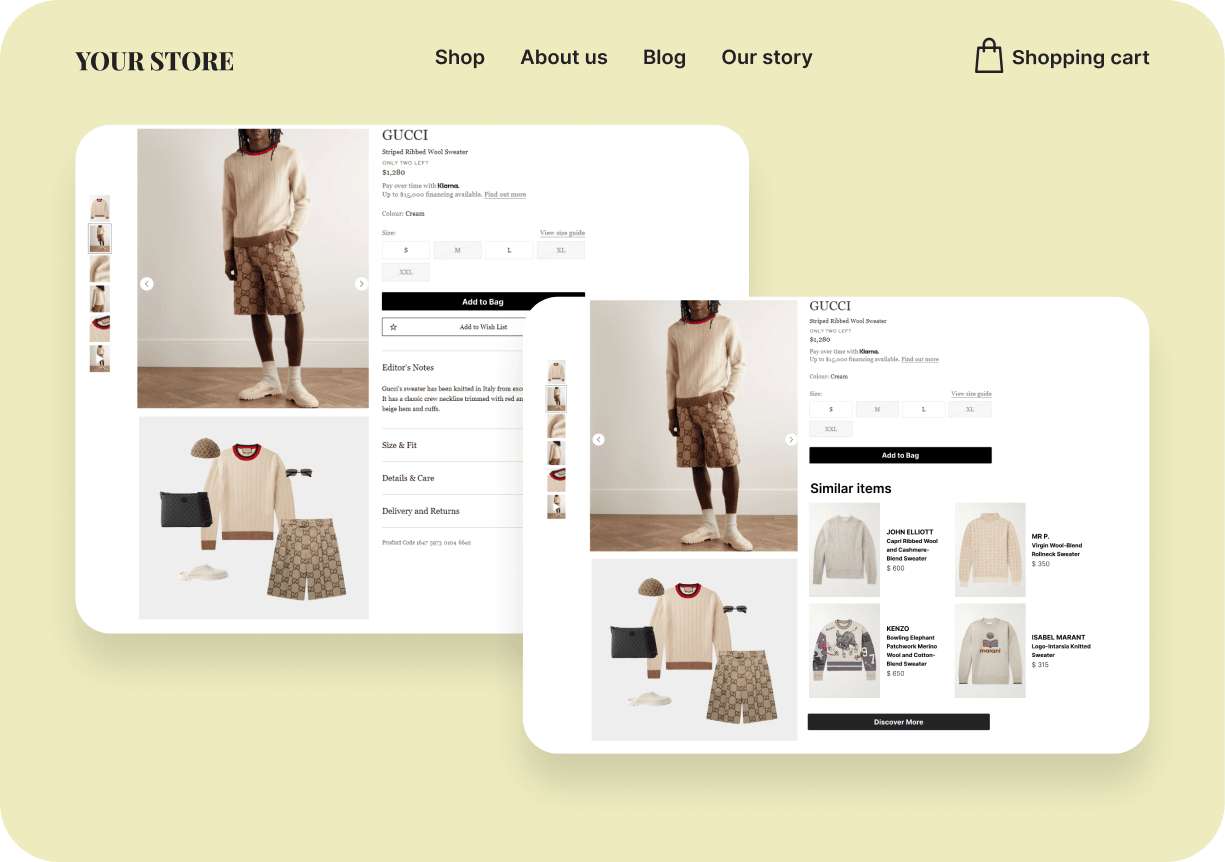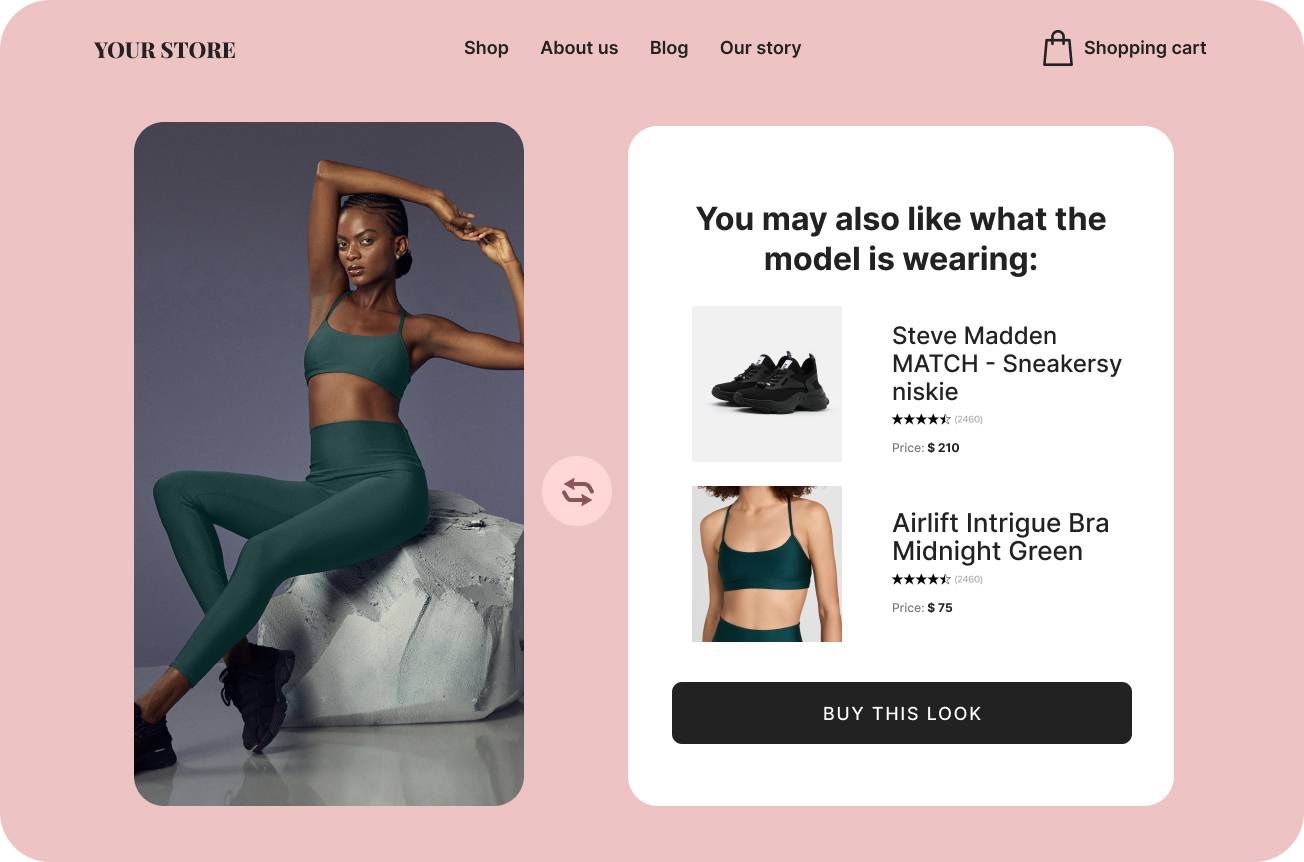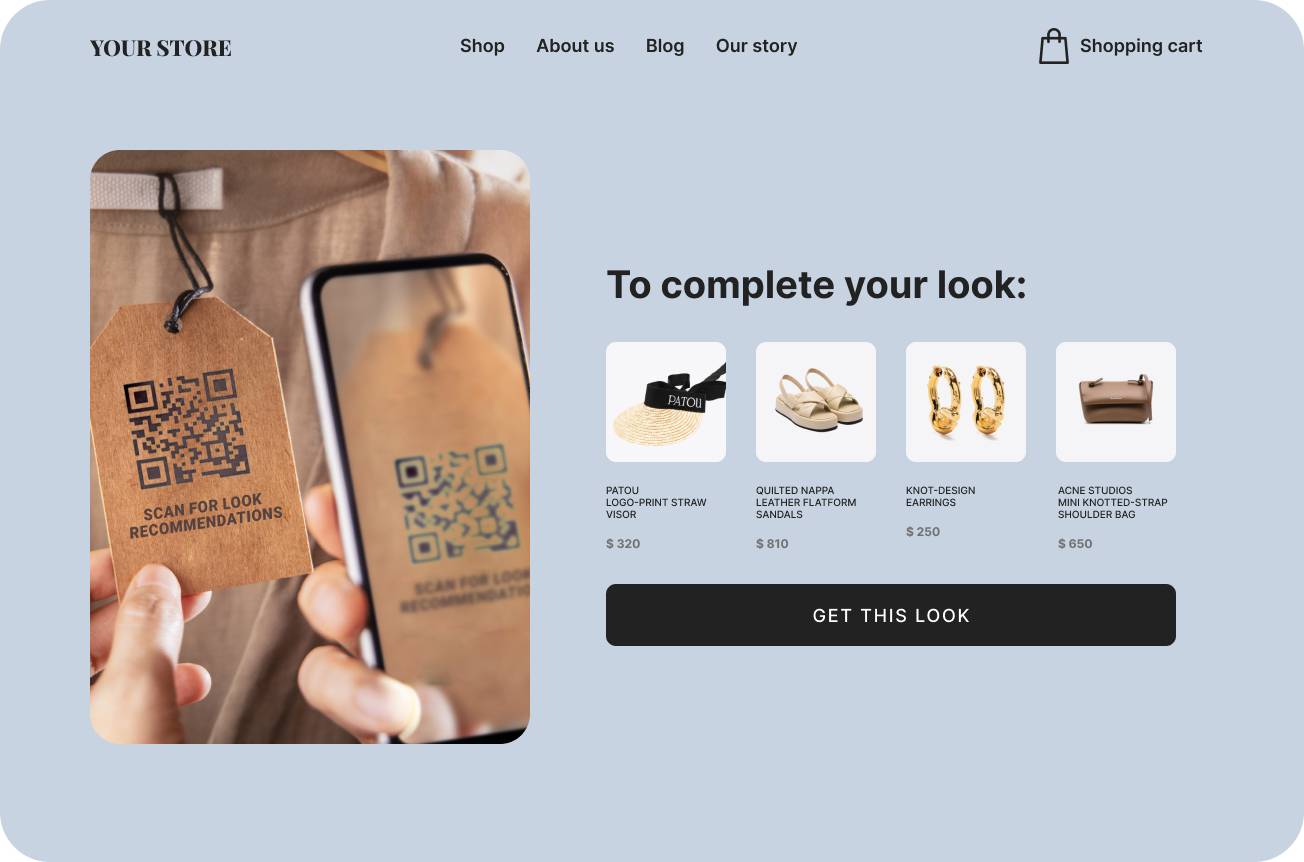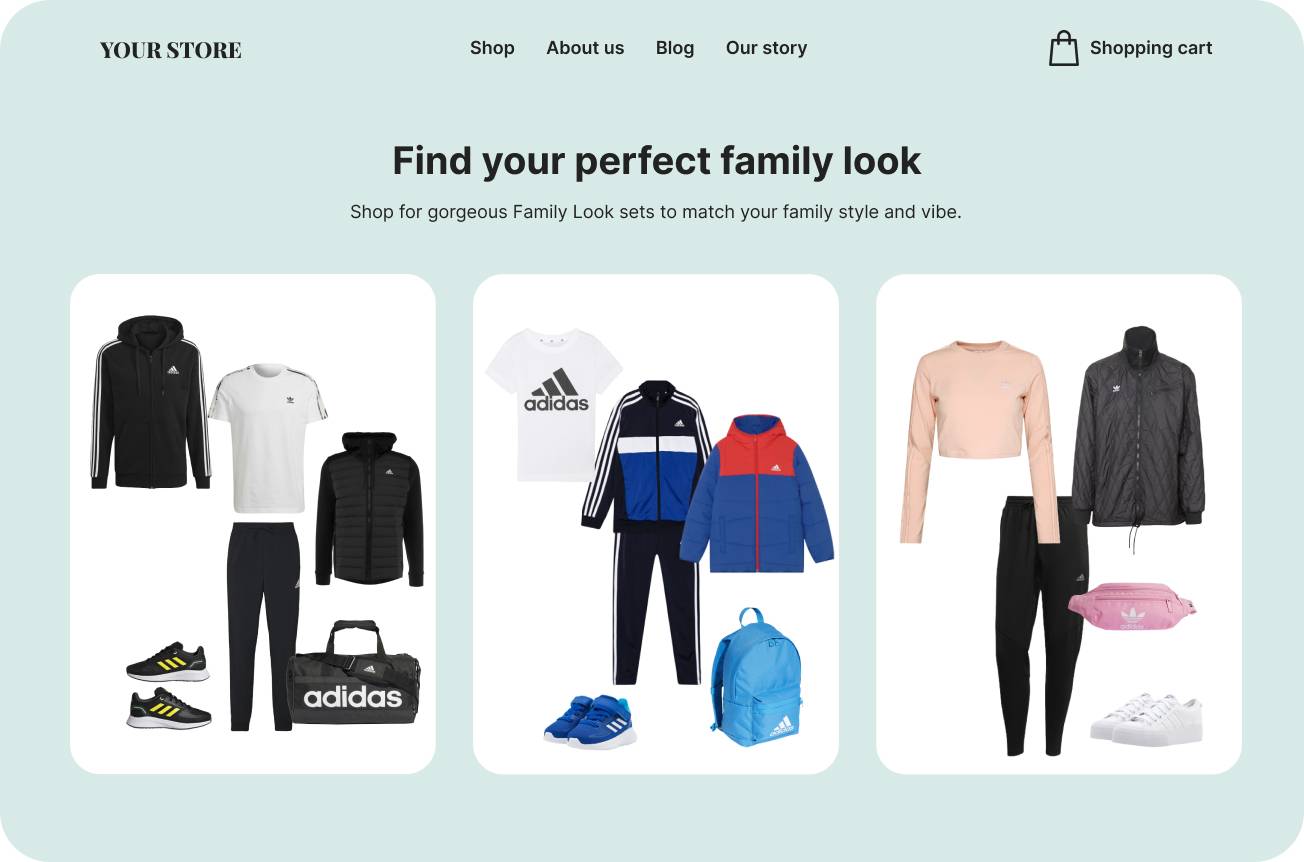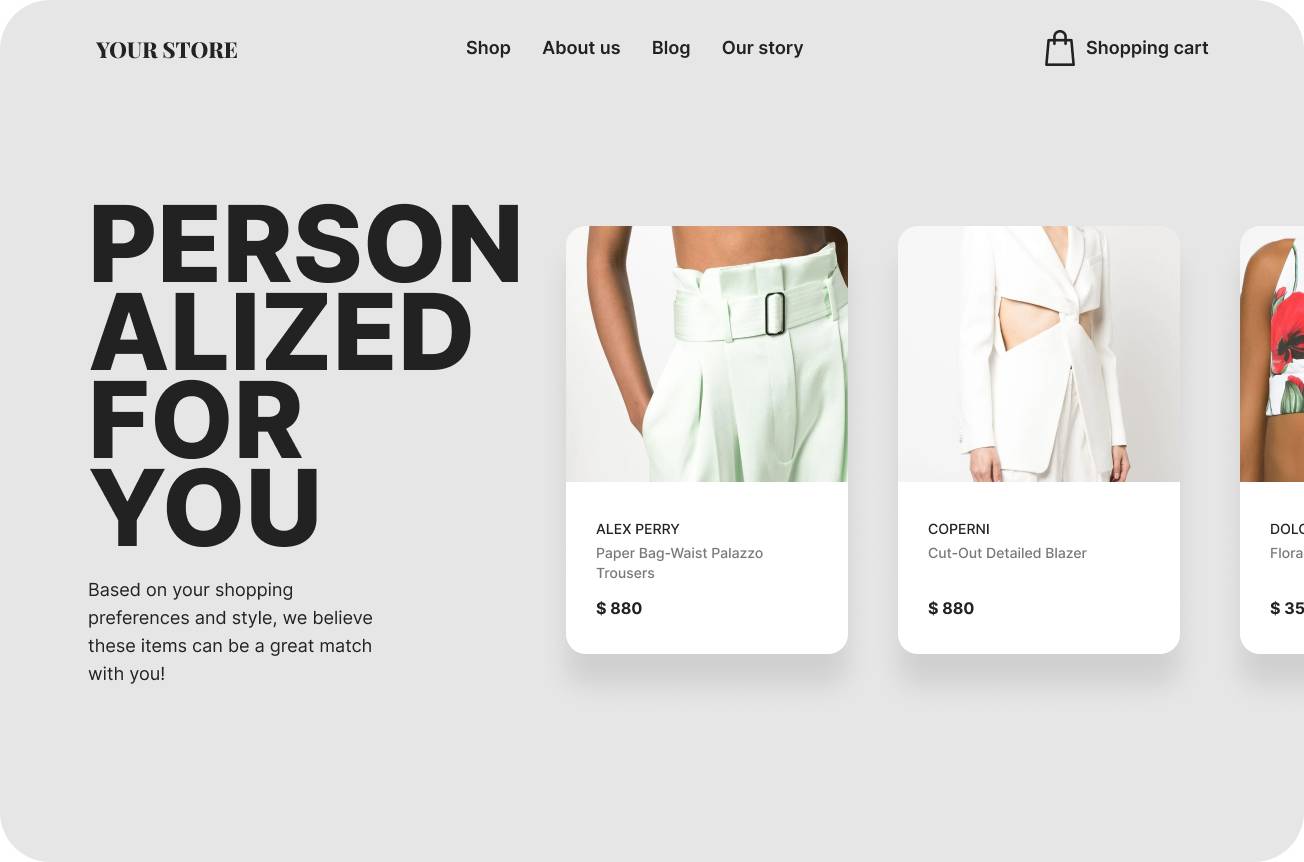Fashion costs our environment dearly, accounting for an estimated 10% of human-made greenhouse gas emissions. And its impact is only getting worse, with fashion production expected to triple by 2030.
With global warming on track to exceed 1.5°C — viewed as the 'tipping point' for large-scale irreversible damage — within the next decade, the industry cannot delay embracing eco-friendly practices.
For trend-setting brands hoping to set an example in sustainability, here are 12 crucial considerations:
Sustainable design & sourcing
1. Are your raw materials sustainably sourced?
How are the materials you use created and are greener alternatives available? Forward-thinking brands are investing in green materials that enable growth without environmental expense. For instance, Pangaia's cotton alternatives, made from abundant and fast-growing plants, offer the same quality but without the water waste, toxic chemicals, and greenhouse gases that result from cotton production.
2. Are you minimizing production logistics?
The benefits of sustainable sourcing are reduced if materials must be shipped worldwide to your facilities on polluting trucks, boats, and planes. Already utilized by market leaders such as ZARA SA, nearshoring — where manufacturing operations are brought closer to the business's primary sales markets — reduces the environmental cost.
3. Are your designs easily recycled?
Just 12% of clothing materials get recycled. Not because they're unrecyclable but due to the challenge of separating the complex combinations of materials that make up a garment. Sustainable brands must design their products for recyclability and, when possible, take control of the end-of-cycle process. Patagonia, for instance, encourages customers to hand back their products instead of throwing them away so that they can be resold, repurposed, or recycled.
Sustainable production & dying
4. Are you using harsh chemicals?
Phthalates for dyeing, formaldehyde for waterproofing, and phosphate for heat protection. Over 8,000 chemicals are used throughout the fashion supply chain to improve features and simplify production while our planet pays the price. From choosing non-toxic pigments to exiling wrinkle-free finishes, brands must commit to planet-saving practices above productivity and profitability.
5. Are you producing too much?
Every seven minutes, a Mount Everest-sized pile of clothing heads to a landfill. Approximately 25% of that waste has never been sold. It's needless waste that sustainable brands such as Sézane aim to avoid by shunning fast fashion and producing limited-quantity designs that sell out and stay out of landfills.
6. Are you focusing on longevity?
Consumers no longer want pieces to wear once. They want well-made garments that survive the test of time, limiting the environmental impact of their wardrobes. Brands such as Aday, for instance, design their products to transcend seasons and offer timeless style, creating pieces their customers can wear for years on end.
Sustainable marketing
7. Are you being transparent?
The modern consumer can spot greenwashing from a mile away. Honesty is always the best policy — even when improvements are required. Brands such as Patagonia and PANGAIA have positioned themselves as leading sustainable fashion brands not by bending the truth but by offering full transparency regarding the exact environmental cost of each product.
8. Are you embracing sustainable innovations?
From biotechnology to waste-reducing retail solutions, innovation can dramatically reduce a brand's environmental impact. GardeRobo A.I.'s style assistant, for instance, enables brands to target shoppers with items they are likely not only to purchase but keep and wear for years to come. Its solutions can instantly reduce return rates and minimize surplus stock to boost the brand's sustainability credentials. FAIRLY MADE® is another startup that helps fashion brands like Maje and Ba&Sh to map their supply chains. By collecting the impact data, brands can then curate it and make it visible to consumers through an online app or QRs printed on the labels.
9. Are you working towards green certification?
The Global Organic Textile Standard, B Corp, Bluesign Technologies, and Global Recycled Standard: These certifications are the gold standard for sustainable fashion. Not only will meeting these standards put your business among the best of the best, joining the likes of Faithfull the Brand Pty Ltd and VEJA, but those certification logos are an easy way for conscious consumers to recognize your extraordinary sustainability efforts.
Sustainable packaging, shipment & returns
10. Have you optimized your packaging?
Despite the alternatives available, packaging accounts for 40% of all plastic waste. Sustainable fashion brand Pact, for instance, has replaced all packaging with Vela bags. These offer a paper alternative with the same qualities as plastic: transparency, durability, weather resistance, and recyclability.
11. Do you use sustainable shipping partners?
Retailers need more control over the process as their orders travel from processing facilities to customers. That's why sustainability-focused brands must choose shipping partners that show commitment to supporting our planet, from investing in green-powered fleets to those that optimize delivery routes to minimize logistics emissions.
12. Is your returns strategy eco-friendly?
Liberal return policies encourage bracketing, where customers buy numerous products they have no intention of keeping. Brands such as Zara and Boohoo are putting their foot down by calling an end to free returns. However, some returns are inevitable. When this is the case, brands shouldn't just consider the financial cost. Are those few dollars saved by requesting the item back worth the environmental expense?
Shoppers aren't demanding perfection. They're demanding action.
Some 66% of consumers consider sustainability when they make a purchase, but that doesn't mean they're only willing to shop with carbon-neutral brands. Instead, they want to see the industry taking responsibility for its sustainability shortcomings and making meaningful changes.
Even small and inexpensive efforts can make a big difference — and research shows consumers are willing to pay the price for products made with our planet in mind, so it's not a matter of choosing between sustainability and profitability.
